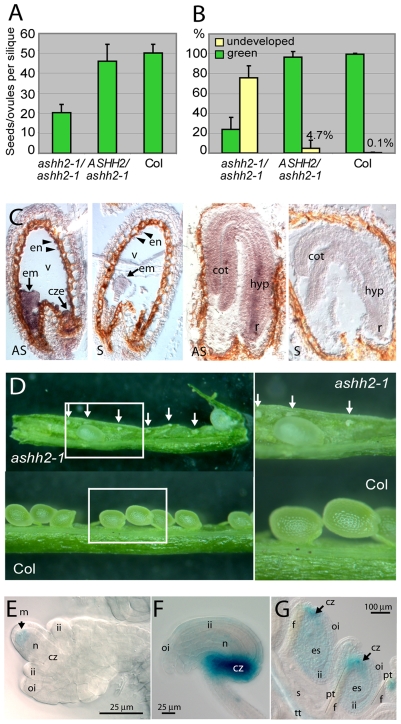Figure 2. Ovule development and seed set in ashh2 mutant plants, and pASHH2:GUS expression during ovule and seed development.
(A) Total number of seeds/ovules per silique in selfed wt (n siliques = 12), homozygous (n siliques = 125) and heterozygous ashh2-1 plants (n siliques = 26). (B) Percentage of developing green seeds and undeveloped ovules per silique in selfed wt (n siliques = 12), homozygous (n siliques = 125) and heterozygous ashh2 plants (n siliques = 26) prior to seed desiccation. (C) In situ hybridization on longitudinal sections of seeds at the heart stage (left) and the walking stick stage (right) of embryo development with ASHH2 antisense probe (AS) and control sense probe (S). Expression was seen in the whole heart stage embryo (em), the chalazal endosperm (cze) as well as the endosperm nodules (en) aligning the embryo sac around the vacuole (v). At the walking stick stage expression was seen both in the cotyledons (cot), hypocotyl (hyp) and root tip (r). (D) Full-length ashh2-1 mutant silique compared to a segment of a wt siliques, with enlarged sections to the right. Arrows point to undeveloped ovules. (E) pASHH2:GUS expression in the nucellus of the developing ovule. The GUS signal is located in the L2 layer where the megaspore (m) forms. Nucellar tissue (n), chalazal tissue (cz), inner integuments (ii), outer integuments (oi). (F) pASHH2:GUS expression in the ovule with mature embryo sac. Strong expression is found in maternal chalazal proliferating tissue (cz). Weaker expression was observed in the nucellus and inner (ii) and outer integuments (oi). (G) pASHH2:GUS expression in maternal tissue strongly in the chalazal tissues (cz) and weaker in the inner integuments (ii) and even weaken in the outer integument (oi) after fertilization. The chalazal region (cz) is indicated by an arrow and pollen tubes (pt) that have grown along the funiculus (f) with thin lines. The septum (s) with its transmitting tract (tt) is indicated.

